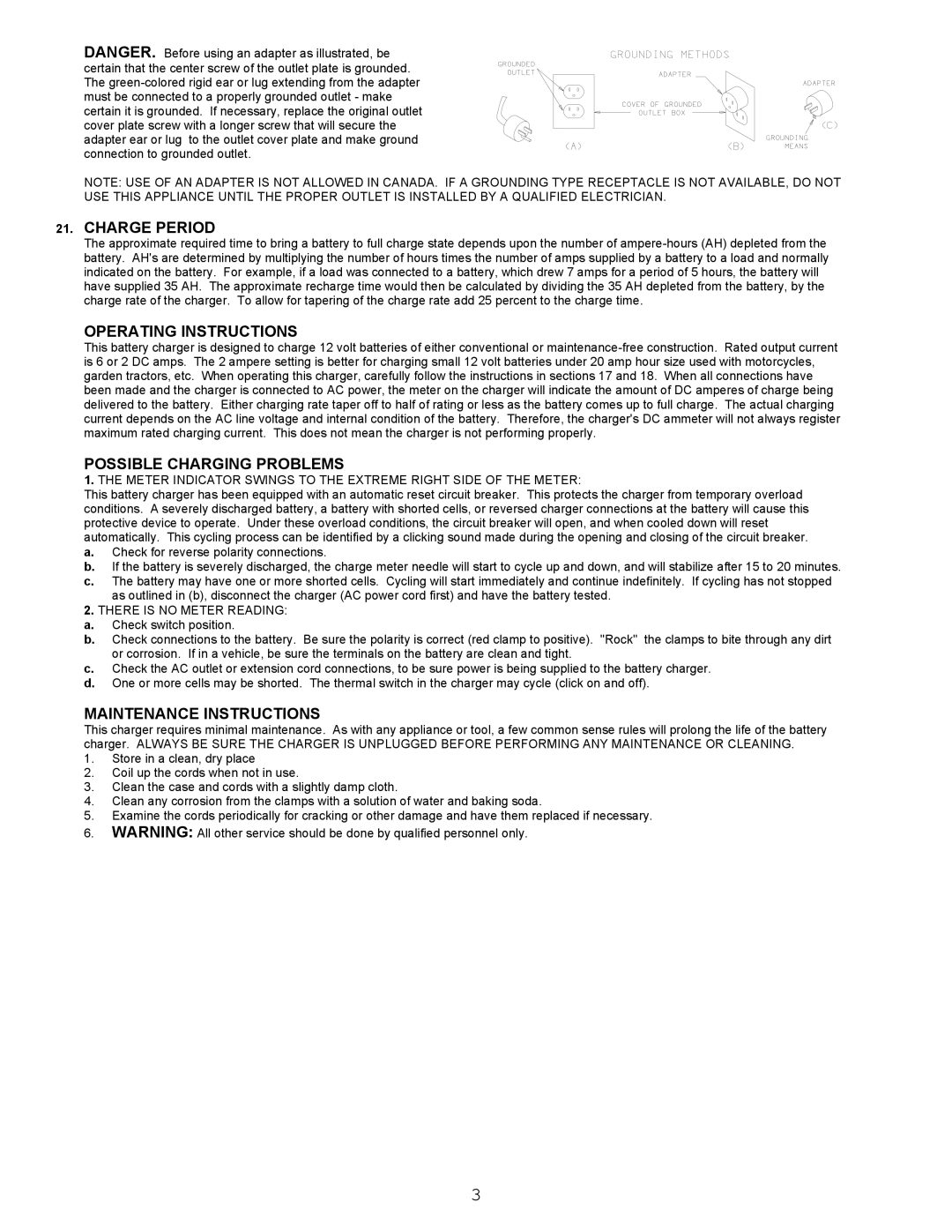
DANGER. Before using an adapter as illustrated, be certain that the center screw of the outlet plate is grounded. The
NOTE: USE OF AN ADAPTER IS NOT ALLOWED IN CANADA. IF A GROUNDING TYPE RECEPTACLE IS NOT AVAILABLE, DO NOT USE THIS APPLIANCE UNTIL THE PROPER OUTLET IS INSTALLED BY A QUALIFIED ELECTRICIAN.
21.CHARGE PERIOD
The approximate required time to bring a battery to full charge state depends upon the number of
OPERATING INSTRUCTIONS
This battery charger is designed to charge 12 volt batteries of either conventional or
POSSIBLE CHARGING PROBLEMS
1.THE METER INDICATOR SWINGS TO THE EXTREME RIGHT SIDE OF THE METER:
This battery charger has been equipped with an automatic reset circuit breaker. This protects the charger from temporary overload conditions. A severely discharged battery, a battery with shorted cells, or reversed charger connections at the battery will cause this protective device to operate. Under these overload conditions, the circuit breaker will open, and when cooled down will reset automatically. This cycling process can be identified by a clicking sound made during the opening and closing of the circuit breaker.
a.Check for reverse polarity connections.
b.If the battery is severely discharged, the charge meter needle will start to cycle up and down, and will stabilize after 15 to 20 minutes.
c.The battery may have one or more shorted cells. Cycling will start immediately and continue indefinitely. If cycling has not stopped as outlined in (b), disconnect the charger (AC power cord first) and have the battery tested.
2.THERE IS NO METER READING:
a.Check switch position.
b.Check connections to the battery. Be sure the polarity is correct (red clamp to positive). "Rock" the clamps to bite through any dirt or corrosion. If in a vehicle, be sure the terminals on the battery are clean and tight.
c.Check the AC outlet or extension cord connections, to be sure power is being supplied to the battery charger.
d.One or more cells may be shorted. The thermal switch in the charger may cycle (click on and off).
MAINTENANCE INSTRUCTIONS
This charger requires minimal maintenance. As with any appliance or tool, a few common sense rules will prolong the life of the battery charger. ALWAYS BE SURE THE CHARGER IS UNPLUGGED BEFORE PERFORMING ANY MAINTENANCE OR CLEANING.
1.Store in a clean, dry place
2.Coil up the cords when not in use.
3.Clean the case and cords with a slightly damp cloth.
4.Clean any corrosion from the clamps with a solution of water and baking soda.
5.Examine the cords periodically for cracking or other damage and have them replaced if necessary.
6.WARNING: All other service should be done by qualified personnel only.
3
